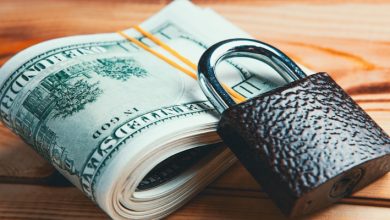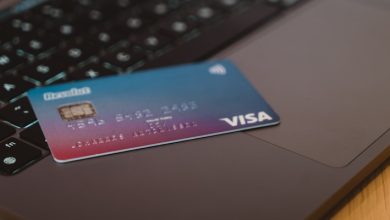What Is a Crypto Wallet, and Why Does Security Matter?

- Understanding the basics of a crypto wallet
- The importance of securing your digital assets
- Types of crypto wallets and their security features
- Tips for keeping your crypto wallet secure
- Common security risks associated with crypto wallets
- Best practices for protecting your crypto investments
Understanding the basics of a crypto wallet
A crypto wallet is a digital tool that allows users to securely store and manage their cryptocurrencies. It works similarly to a physical wallet, but instead of holding cash and cards, it holds digital currencies like Bitcoin, Ethereum, and others. Understanding the basics of a crypto wallet is essential for anyone looking to enter the world of cryptocurrency trading or investing.
There are different types of crypto wallets, each with its own unique features and security levels. The two main categories are hot wallets and cold wallets. Hot wallets are connected to the internet, making them more convenient for frequent transactions but also more vulnerable to hacking. Cold wallets, on the other hand, are offline devices or paper wallets that offer higher security but are less convenient for everyday use.
When choosing a crypto wallet, it’s important to consider factors such as security, ease of use, and compatibility with the cryptocurrencies you plan to store. Security should be a top priority, as the decentralized and irreversible nature of cryptocurrency transactions means that once your funds are stolen, they are unlikely to be recovered. Look for wallets that offer features like two-factor authentication, multi-signature functionality, and backup options to protect your assets.
The importance of securing your digital assets
Securing your digital assets is crucial when it comes to using a cryptocurrency wallet. Without proper security measures in place, you could be at risk of losing your investments to hackers and scammers. It is important to remember that once your digital assets are lost or stolen, they are nearly impossible to recover.
One way to secure your crypto wallet is by choosing a wallet that offers robust security features such as two-factor authentication, encryption, and multi-signature capabilities. Additionally, it is essential to keep your private keys secure and never share them with anyone. Your private keys are essentially the keys to your digital assets, and if they fall into the wrong hands, you could lose everything.
Furthermore, regularly updating your wallet software and keeping your devices free from malware and viruses can help protect your digital assets from potential threats. It is also advisable to use hardware wallets for an extra layer of security, as they are not connected to the internet and are therefore less vulnerable to cyber attacks.
In conclusion, securing your digital assets should be a top priority when using a crypto wallet. By taking the necessary precautions and following best practices for security, you can safeguard your investments and have peace of mind knowing that your digital assets are safe and secure.
Types of crypto wallets and their security features
Crypto wallets come in various types, each offering different security features to protect your digital assets. Here are some of the most common types of crypto wallets and their security measures:
- Hardware Wallets: These wallets store your private keys offline on a physical device, making them less vulnerable to hacking attacks. They are considered one of the most secure options for storing cryptocurrencies.
- Software Wallets: Software wallets are digital applications that can be accessed on your computer or mobile device. While convenient, they are more susceptible to online threats such as malware and phishing attacks.
- Online Wallets: Online wallets are hosted on the cloud, making them convenient for accessing your funds from any device. However, they are considered less secure than hardware wallets due to the risk of hacking.
- Paper Wallets: Paper wallets involve printing your private keys and QR codes on a piece of paper. While they are immune to cyber-attacks, they can be easily damaged, lost, or stolen.
When choosing a crypto wallet, consider the level of security it provides and how you plan to use your digital assets. It’s essential to balance convenience with security to ensure your funds are safe from unauthorized access.
Tips for keeping your crypto wallet secure
Ensuring the security of your cryptocurrency wallet is crucial to protect your digital assets from theft and hacking. Here are some tips to help you keep your crypto wallet secure:
- Keep your private keys safe and never share them with anyone. Your private keys are like the password to your wallet, so make sure to store them in a secure place.
- Enable two-factor authentication (2FA) for an extra layer of security. 2FA requires you to provide two forms of identification before accessing your wallet.
- Regularly update your wallet software to protect it from known vulnerabilities and security flaws.
- Use a hardware wallet for added security. Hardware wallets store your private keys offline, making it harder for hackers to access them.
- Avoid storing large amounts of cryptocurrency on exchanges. Instead, transfer your funds to your personal wallet where you have full control over your assets.
By following these tips, you can help ensure that your crypto wallet remains secure and your digital assets are protected from unauthorized access.
Common security risks associated with crypto wallets
When it comes to crypto wallets, there are several common security risks that users should be aware of in order to protect their digital assets. One major risk is phishing attacks, where malicious actors attempt to trick users into revealing their private keys or seed phrases on fake websites or through fraudulent emails. Another risk is malware, which can infect a user’s device and steal their cryptocurrency information. Additionally, there is the risk of physical theft if a user’s wallet is not properly secured.
It is important for users to be cautious when entering their private keys or seed phrases online, and to always verify the authenticity of websites before providing any sensitive information. Using antivirus software and keeping devices up to date with the latest security patches can help protect against malware attacks. Users should also consider storing their crypto wallets in a secure location, such as a safe or a safety deposit box, to prevent physical theft.
In conclusion, understanding the common security risks associated with crypto wallets is essential for safeguarding digital assets. By being vigilant and taking proactive measures to protect against phishing attacks, malware, and physical theft, users can help ensure the security of their cryptocurrency investments. Remember to always prioritize security when using crypto wallets to minimize the risk of potential threats.
Best practices for protecting your crypto investments
When it comes to protecting your cryptocurrency investments, there are several best practices to keep in mind. First and foremost, it is crucial to choose a secure and reputable crypto wallet. Look for wallets that offer features such as two-factor authentication, multi-signature functionality, and cold storage options.
Another important aspect of protecting your crypto investments is to regularly update your wallet software. Developers often release security patches and updates to address vulnerabilities, so staying up to date is essential in keeping your funds safe.
It is also recommended to use a hardware wallet for storing large amounts of cryptocurrency. Hardware wallets are physical devices that store your private keys offline, making them much more secure than hot wallets connected to the internet.
Additionally, be cautious of phishing scams and only access your wallet through official websites or applications. Do not share your private keys or seed phrases with anyone, and consider using a password manager to securely store your login information.
Lastly, consider diversifying your investments across multiple wallets and exchanges to reduce the risk of losing all your funds in case of a security breach. By following these best practices, you can help protect your crypto investments and minimize the chances of falling victim to hackers or scammers.



